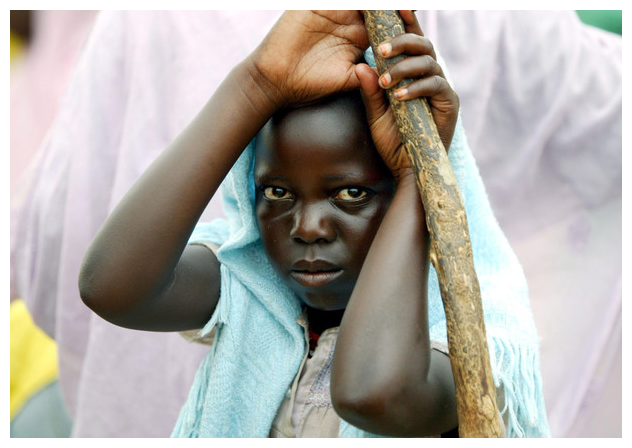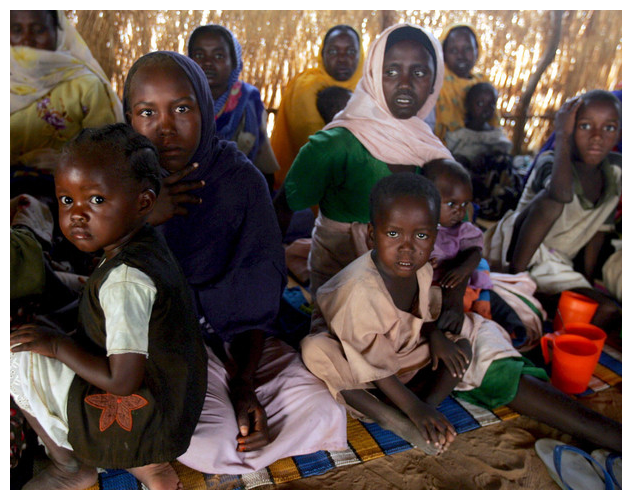Psychic numbing and genocide


For sixty plus years, since the liberation of the Nazi death camps, we've said "never again." Since then we've had mass exterminations of human beings, whether by deliberate malice or sheer, bloody-minded ideological stupidity, in China, Cambodia, Nigeria, Ethiopia, Kosovo, and Rwanda. Each time we tut tut, but ... we do nothing. "Never again" has become "again and again." And now there's Darfur, a region of Sudan, where the Janjaweed gangs, with the support of the corrupt national government, are carrying out yet another genocide. In a few years there'll be an HBO movie on Darfur. We'll vow "never again," once again, but the world being as it is, there will be another genocide under way even as we engage in the ritual of mild self-flagellation for Darfur. Again and again.Why do we ignore mass murder and genocide? There is no simple answer. It is not because we are insensitive to the suffering of our fellow human beings - witness the extraordinary efforts we expend to rescue someone in distress. It is not because we only care about identifiable victims, of similar skin color, who live near us: witness the outpouring of aid to victims of the December 2004 tsunami in South Asia. We cannot simply blame our political leaders. Although President Bush has been quite unresponsive to the murder of hundreds of thousands of people in Darfur, it was Clinton who ignored Rwanda, and Roosevelt who did little to stop the Holocaust. Behind every president who ignored mass murder were millions of citizens whose indifference allowed them to get away with it. It's not fear of losing American lives in battle that necessarily deters us from acting. We have not even taken quite safe steps that could save many lives, such as bombing the radio stations in Rwanda that were coordinating the slaughter by machete of 800,000 people in 100 days, or supporting the forces of the African Union in Darfur, or just raising our powerful American voices in a threatening shout - Stop that killing! - as opposed to turning away in silence. Every episode of mass murder is unique and raises unique social, economic, military, and political obstacles to intervention. But the repetitiveness of such atrocities, ignored by powerful people and nations, and by the general public, calls for explanations that may reflect some fundamental deficiency in our humanity - a deficiency that, once identified, might possibly be overcome. This paper examines one fundamental mechanism that may play a role in many, if not all, episodes of mass-murder neglect. This mechanism involves the capacity to experience affect, the positive and negative feelings that combine with reasoned analysis to guide our judgments, decisions, and actions. Many researchers have begun to study the "dance of affect and reason" as it applies to decision making. I shall draw from this research to show how the statistics of mass murder or genocide, no matter how large the numbers, fail to convey the true meaning of such atrocities. The numbers fail to spark emotion or feeling and thus fail to motivate action. Genocide in Darfur is real, but we do not "feel" that reality. I shall conclude with suggestions about how we might make genocide "feel real" and motivate appropriate interventions. I shall also argue that we cannot only depend on our feelings about these atrocities but, in addition, we must create and commit ourselves to institutional and political responses based upon reasoned analysis of our moral obligations to stop the mass annihilation of innocent people. Although I have attempted to fashion a compelling explanation for genocide neglect that has implications for action, the story is not complete. The psychological account, while based on theory and recent empirical studies, clearly needs further testing and development, particularly to examine more directly the relationship between imagery, affect, and sensitivity to numbers. The action implications remain to be elaborated by legal scholars and others.
On April 28, 1994: the Associated Press (AP) bureau in Nairobi received a frantic call from a man in Kigali who described horrific scenes of concerted slaughter that had been unfolding in the Rwandan capital "every day, everywhere" for three weeks. "I saw people hacked to death, even babies, month-old babies.... Anybody who tried to flee was killed in the streets, and people who were hiding were found and massacred."Dubinsky (2005, p. 113) further notes that:
The caller's story was dispatched on the AP newswire for the planet to read, and complemented an OXFAM statement from the same day declaring that the slaughter - the toll of which had already reached 200,000 - 'amounts to genocide.' The following day, UN Secretary General Boutros Boutros-Ghali acknowledged the massacres and requested that the Security Council deploy a significant force, a week after the council had reduced the number of UN peacekeepers in Rwanda from 2,500 to 270. Yet the killings continued for another two and a half months. By mid-July, when the government was finally routed by exiled Tutsi rebels, the slaughter had been quelled, and 800,000 were dead, reinforcements from the United Nations were only just arriving.In his review of the book Conspiracy to Murder: The Rwandan Genocide (Melvern, 2004), Dubinsky (2005, p. 113) draws an ominous lesson from what happened in Rwanda:
Despite its morally unambiguous heinousness, despite overwhelming evidence of its occurrence (for example, two days into the Rwandan carnage, the US Defense Intelligence Agency possessed satellite photos showing sprawling massacre sites), and despite the relative ease with which it could have been abated (the UN commander in Rwanda felt a modest 5,500 reinforcements, had they arrived promptly, could have saved tens of thousands of lives) - despite all this, the world ignored genocide.Unfortunately, Rwanda is not an isolated incident of indifference to mass murder and genocide. In a deeply disturbing book titled A Problem from Hell: America and the Age of Genocide, journalist Samantha Power documents in meticulous detail many of the numerous genocides that occurred during the past century, beginning with the slaughter of two million Armenians by the Turks in 1915 (Power, 2003, see Table 1). In every instance, American response was inadequate. She concludes, "No U.S. president has ever made genocide prevention a priority, and no U.S. president has ever suffered politically for his indifference to its occurrence. It is thus no coincidence that genocide rages on" (Power, 2003; p. xxi).
| Table 1. A century of genocide. |
| Armenia (1915) |
| Ukraine (1932-1933) |
| Nazi Germany/Holocaust (World War II) |
| Bangladesh (1971) |
| Cambodia (1975-1979) |
| Countries in the former Yugoslavia (1990s) |
| Rwanda (1994) |
| Zimbabwe (2000) |
| Congo (Today) |
| Darfur (Today) |
| ? (Tomorrow) |
... the atrocities that were known remained abstract and remote.... Because the savagery of genocide so defies our everyday experience, many of us failed to wrap our minds around it.... Bystanders were thus able to retreat to the "twilight between knowing and not knowing." [italics added]I shall argue below that the disengagement exemplified by failing to "wrap our minds" around genocide and retreating to the "twilight between knowing and not knowing" is at the heart of our failure to act against genocide. Samantha Power's insightful explanation is supported by the research literature in cognitive and social psychology, as described in the sections to follow.
| System 1: Experiential System | System 2: Analytic System |
| Affective: pleasure-pain oriented | Logical: reason oriented (what is sensible) |
| Connections by association | Connections by logical assessment |
| Behavior mediated by feelings from past experiences | Behavior mediated by conscious appraisal of events |
| Encodes reality in images, metaphors, and narratives | Encodes reality in abstract symbols, words, and numbers |
| More rapid processing: oriented toward immediate action | Slower processing: oriented toward delayed action |
| Self-evidently valid: "experiencing is believing" | Requires justification via logic and evidence |
... moral intuition can be defined as the sudden appearance in consciousness of a moral judgment, including an affective valence (good-bad, like-dislike) without any conscious awareness of having gone through steps of searching, weighing evidence, or inferring a conclusion. Moral intuition is therefore ... akin to aesthetic judgment. One sees or hears about a social event and one instantly feels approval or disapproval.





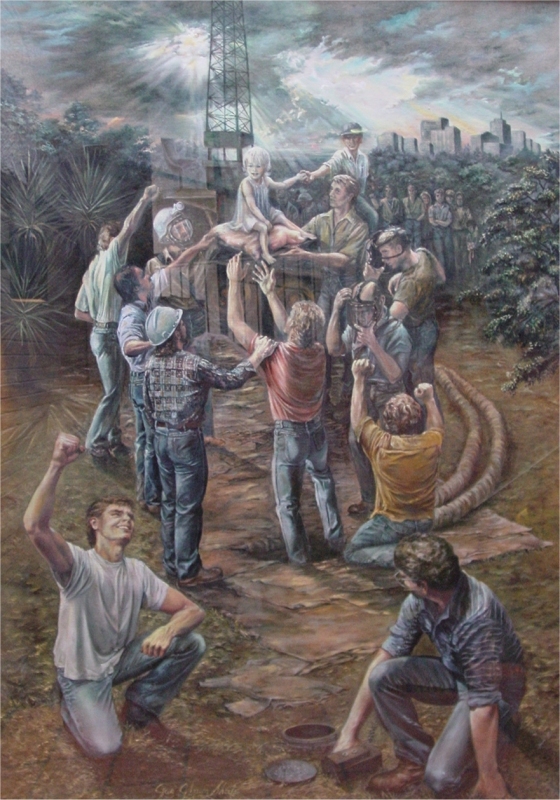
The power of fiction is to create empathy. If lifts you away from your chair and stuffs you gently down inside someone else's point of view. ... A newspaper could tell you that one hundred people, say, in an airplane, or in Israel, or in Iraq, have died today. And you can think to yourself, "How very sad," then turn the page and see how the Wildcats fared. But a novel could take just one of those hundred lives and show you exactly how it felt to be that person rising from bed in the morning, watching the desert light on the tile of her doorway and on the curve of her daughter's cheek. You could taste that person's breakfast, and love her family, and sort through her worries as your own, and know that a death in that household will be the end of the only life that someone will ever have. As important as yours. As important as mine. (p. 231)Showing insight into the workings of our affective system as keen as any derived from the psychologist's laboratory, Kingsolver continues: Confronted with knowledge of dozens of apparently random disasters each day, what can a human heart do but slam its doors? No mortal can grieve that much. We didn't evolve to cope with tragedy on a global scale. Our defense is to pretend there's no thread of event that connects us, and that those lives are somehow not precious and real like our own. It's a practical strategy, to some ends, but the loss of empathy is also the loss of humanity, and that's no small tradeoff. Art is the antidote that can call us back from the edge of numbness, restoring the ability to feel for another. (p. 231-232) Although Kingsolver is describing the power of fiction, nonfiction narrative can be just as effective. The Diary of Anne Frank and Elie Weisel's Night certainly convey, in a powerful way, the meaning of the Holocaust statistic "six million dead."
|
|


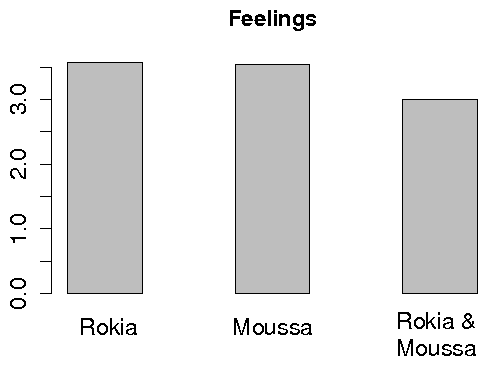
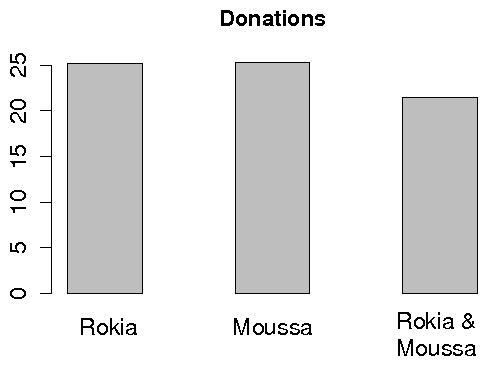

... eventually, when Darfur's violence mercifully ends, a number will be agreed upon. That number, like the figure of 800,000 for the Rwanda massacre, will be forever appended to the awful events. The rest of the world, slow to react to Darfur, will then have plenty of opportunity to think about it, and wonder why it was able to grow as large as it did. (Lacey, 2005)
